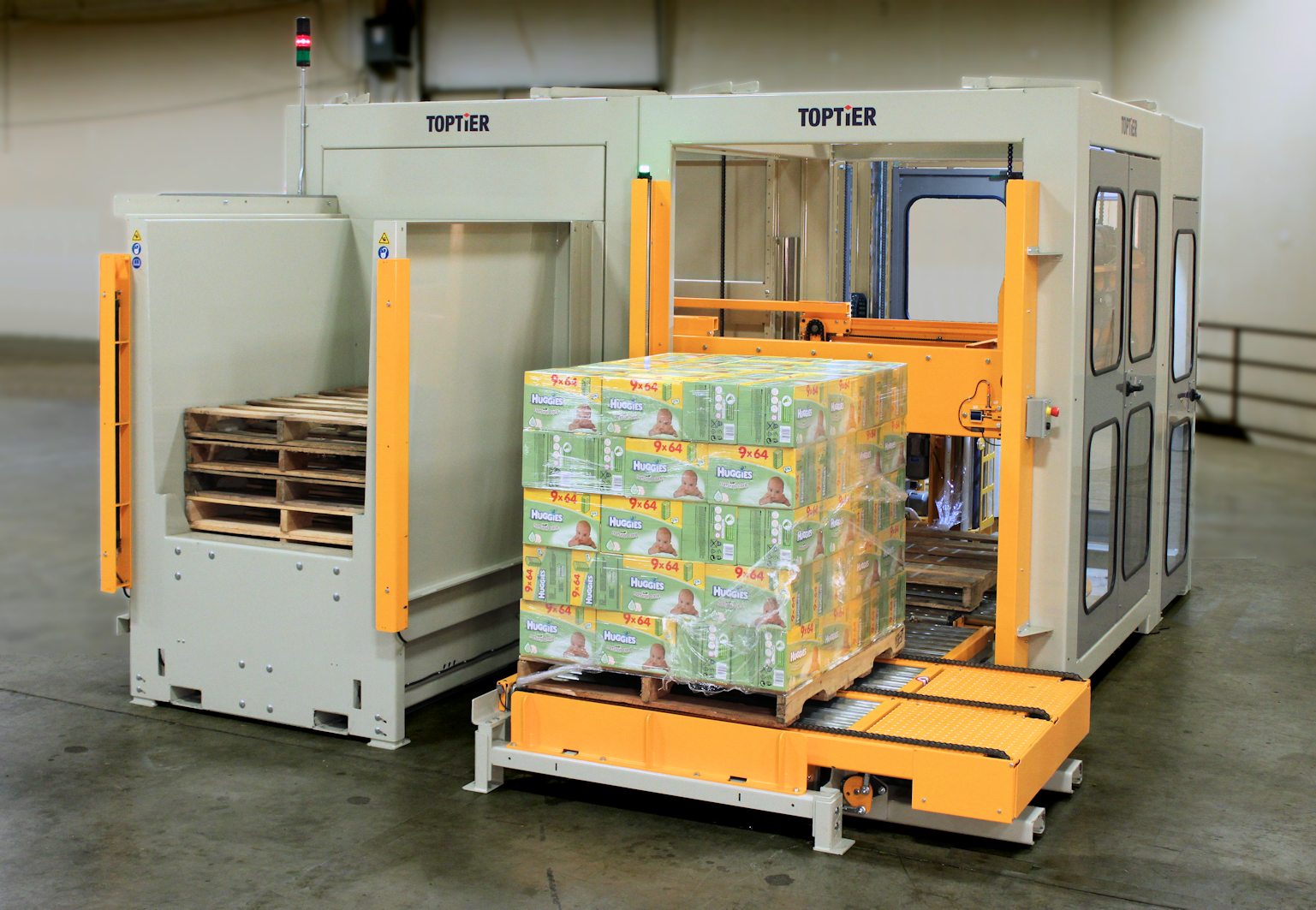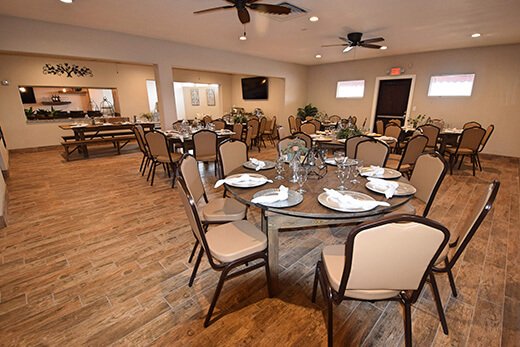Transport Packaging of Goods and using Conventional Palletizer

Packaging on Conventional Palletizer pallets It is much easier to operate with goods placed on wooden pallets (pallets), which are convenient to load with a forklift, and the fixed dimensions of such cargo spaces allow you to make an optimal calculation of their placement in the cargo space.
This allows you to avoid damage to the package and reliably combine small parts of the cargo into a single whole. This service will be in demand by those companies and entrepreneurs for whom the quality of transportation and the safety of goods are especially important. Wrapping products with film provides certain advantages, from the production of goods to their direct sale, including the safety of goods, the convenience of their transportation and the optimization of storage in the warehouse. The transfer of goods to storage will be much faster and safer if it is in pallets. They provide reliable protection of goods from deformation and other damage that may occur during their delivery.
The use of this type of conventional palletizer packaging is directly related to the use of forklifts and other lifting and transport mechanisms.
Today, the storage of products in pallets is becoming more and more used and relevant. Conventional Palletizer Pallets can be of different sizes, it all depends on the personal choice of a particular organization and type of product.Types of palletized cargo spaces like here.
In the cargo transportation market, the following types of palletized cargo spaces are usually distinguished:
1. Europallets (800 x 1200 mm)
As a rule, they are made of wood and are marked with the EPAL brand in an oval. Overall dimensions: 0.8 x 1.2 x 0.145 m. Up to 33 such units can be loaded into one standard semi-trailer, which is the maximum possible amount for palletized cargo.
2. Finnish pallets (1000 x 1200 mm)
Overall dimensions of such pallets: 1.0 x 1.2 x 0.145 m. When planning to load a separate vehicle, you must take this factor into account.
3. American pallets (1200 x 1200 mm)
Overall dimensions of such pallets: 1.2 x 1.2 x 0.145 m. This type of cargo space was first used in the United States and is still very popular in this country for international cargo transportation. The maximum permissible weight of cargo packed on one American pallet is 1200 kg. When planning to load into a separate vehicle, this factor must be taken into account.

How are loads attached to pallets?
1. Stacking goods on top of each other
Loads are secured by stacking identical-sized goods on top of each other when possible. In this case, the load is held at the expense of its own weight. An example would be ceramic bricks or bags of cement, which are just
2. Binding with fastening straps
Strapping a pallet with a load with fastening belts or belts made of various materials, such as metal, fabric or polymers.
3. Wrapping with polymer film
The cargo space is wrapped with a polymer film. Quite often, stretchable stretch or air – bubble films are used for packaging fragile goods.
4. Wooden crate
Creating a wooden crate is the most reliable type of fastener.
Palletizing allows you to:
- Create a universal transport unit, compact and convenient for transportation;
- Optimize the volume and size of the transported batch of goods;
- Reduce transportation costs due to compact packaging;
- Ensure the safety of the cargo, protect it from damage during transportation;
- Increase the efficiency of the use of warehouse space, perform warehouse operations, perform pallet storage.
The cost of Conventional Palletizer services varies. Its price depends on:
- The need for additional work;
- Operational performance of certain cargo handling operations;
- Customer’s wishes to use non-standard pallets, etc.
Reuse of pallets
In conclusion, I would like to mention that any of the above-mentioned pallets can be reused for the internal needs of your company or sold profitably to resellers of containers, if they are in good condition.
Transport packaging of goods
Depending on the material of production of transport packaging, there are several types: soft, semi-rigid, rigid. Semi-rigid packaging is a cardboard box or a piece of cardboard. Cardboard protects the cargo from dust and dirt, and can also serve as an intermediate packaging for tarno-piece cargo.
Soft packaging includes: paper, bags made of polypropylene fabric, all types of film (air bubble film, stretch film, etc.). But it is worth noting that bags made of polypropylene fabric (Big bags) can serve as a separate transport package of goods.

Preparation for the transportation of goods of non-standard sizes
There is a group of goods that, due to their size, is not suitable for palletizing. A package consists of at least two parts of the same product assembled using packaging materials. This allows you to protect the cargo from damage during transportation and prepare it for mechanical loading and unloading. Another way to combine goods for transportation is to use containers. Conventional Palletizer Containers allow the transportation of individual goods in or without packaging, in the form of consolidated cargo.
They can have different designs.
In the process of their manufacture, different materials are used. Containers are often made of steel sheet, wire mesh with appropriate reinforcement, wood or plastic. The latter are intended for transportation of food products: beer, mineral water, milk, vegetables.
A container is ” transport equipment suitable for multiple use, designed in such a way as to facilitate the transport of goods by one or more modes of transport without the need to overload the cargo contained in it. The container is reloaded from one vehicle to another by lifting equipment. The term “container” does not apply to either the vehicle or the package. Containers can be of different sizes, have different design features and various additional equipment. Such distinctive features are the main criterion for their classification. Depending on the type of transport, different types of transport impacts on the cargo may occur during transportation, thereby posing a threat to the quality of the transported Conventional Palletizer goods.
For example, threats caused by precipitation, dust, sunlight, as well as impacts, vibrations, and static pressure in vehicles. Other types of threats include heavy strikes on rail transport, often occurring when forming train trains at marshalling yards.
Stowing of cargo for transportation on a pallet
The dimensions of the pallet may vary. A number of manufacturers use pallets with dimensions of 1000 x 1200 x 144 mm and 1000 x 800 x 144 mm. The main condition for creating a cargo space is the correct laying of a specific product on a pallet.
The following layers are laid across relative to the previous one.
This method allows you to protect the entire unit from spontaneous deformation due to high load. Laying cargo on a pallet requires compliance with certain rules: the cargo must not go beyond its contour;
However, it is much more common to use regular scotch tape. After wrapping such a foil or applying it as a coating with subsequent heating, it acquires plasticity, compresses and adheres tightly to the pallet, thus providing an impermeable package.
This makes it possible to form pallet blocks, sometimes even without complete transport packaging. This method protects the goods from external influences, increases the compactness of the cargo and reduces the risk of deformation of the loading unit.




